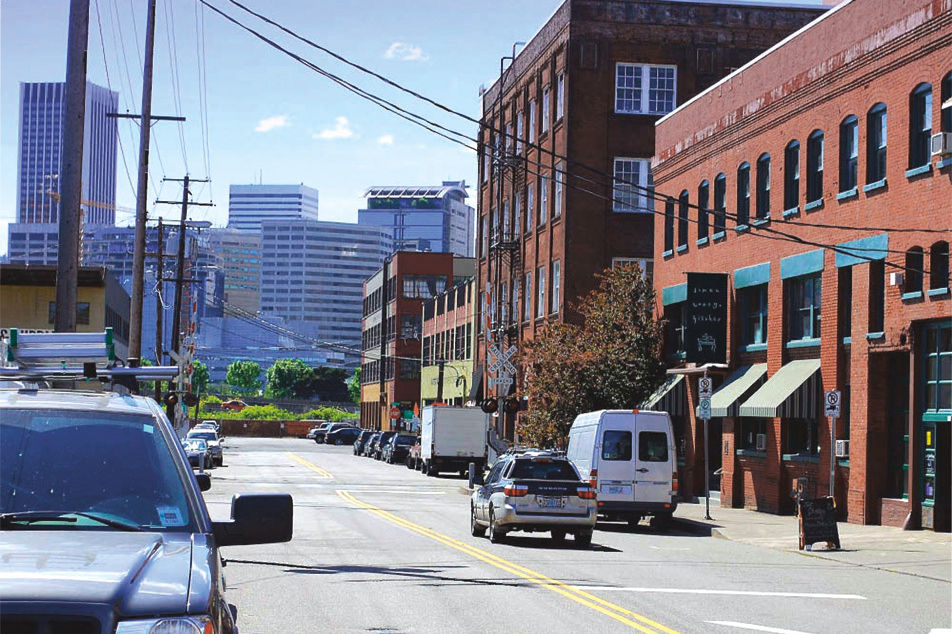
East Side Rising
INSIDE FIVE-WEEK-OLD WATER AVENUE COFFEE on a recent August morning, gleaming countertops—all venerable fir reclaimed from some century-old industrial building nearby—caught the milky light from an overcast sky. Espresso machines hissed as a steady stream of walk-in customers homed in on the counter. In the street outside, two men steered a Skyjack crane above yet another new business next door: Bunk Bar, the latest venture from celebrated chef Tommy Habetz.
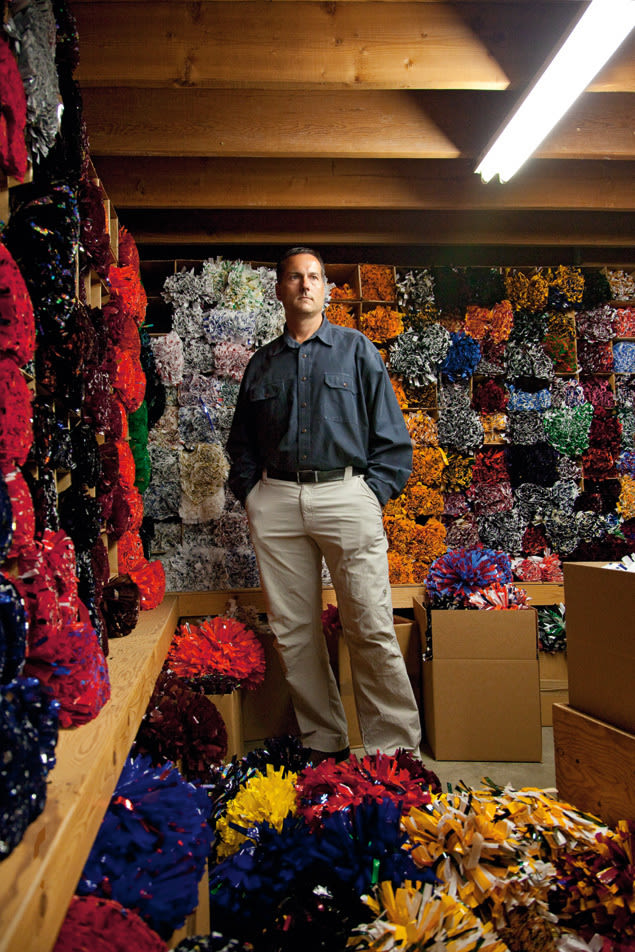
Image: Larry Letters
The low-key but enterprising scene is typical of the Central Eastside, where about 1,100 increasingly busy businesses keep more than 17,000 Portlanders employed. While the nightly news bemoans sluggish job-growth rates, stubborn unemployment, and, potentially, a long and irreversible decline, the district’s nearly 700 acres are blooming with counter-cyclical optimism.
"Throughout the recession, the Central Eastside has stayed strong," says Trang Lam, a senior project manager for the Portland Development Commission (PDC), which has overseen the neighborhood’s Central Eastside Urban Renewal Area since 1986. "You have legacy businesses, which tend to be owner-occupied light-industrial spaces, and you have whole generations of new businesses in creative and professional fields. It’s not blue-collar or white-collar—it’s a mix of both." (According to the PDC’s most recent stats, as the nation plummeted into recession in 2007 and 2008, the Central Eastside added about 500 jobs.)
To be sure, the district’s practical ethos seems to be the fuel of its own regeneration. "We looked at other places that would have been a much better fit for pure retail," says Matt Milletto, co-owner of Water Avenue Coffee. "But we’re not just a retail café. We’re doing factory-style roasting and wholesale shipping, and this facility allows both sides to exist in the same space. This area has been an industrial stronghold for decades, and we’re both paying tribute to that heritage and building on it."
Walk around the neighborhood, and the impressions of both Lam and Milletto resonate. Just down the street from Water Avenue Coffee and Bunk Bar, the new Hair of the Dog Brewery sports a fresh coat of chocolate-Labrador brown paint. A few blocks away, the refurbished Olympic Mills Commerce Center teems with high-minded nonprofits like the Coalition for a Livable Future and a clutch of design and tech businesses including AboutUs.org, where wiki pioneer Ward Cunningham now works as "chief inventor." At Olympic Provisions—recently named one of America’s best new restaurants by Forbes magazine—a studious kitchen staff peddles excellent sandwiches stuffed with house-made charcuterie. It can all make for an odd, if strangely entertaining mix: new agey acupuncturists squeeze up against Empire Labs, a maker of (reportedly) popular sex toys.

Image: Larry Letters
Meanwhile, rock-ribbed industries served by working docks and railyards carry on, lending the area an "authenticity" its newest residents obviously admire. Pratt & Larson manufactures and sells tile. Old-school grocery and restaurant wholesalers like Graziano and Rinella recall why a corridor of the neighborhood was called Produce Row. Eastside Plating’s Plant #5 produces high-quality metal finishes. Throw in small furniture manufacturers, auto body shops, and City Liquidators’ block-size mausoleums of home and office furnishings, and you have a neighborhood that’s the antithesis of our neatly layered, office-over-retail downtown across the river.
"The story I hear all the time is that the new professional and creative businesses like being close to those legacy industries," Lam says. "In the Central Eastside, you can really operate in that Portland-centric way, getting most of what you need to run your business from local sources."
Of course, two traditional catalysts of neighborhood revitalization—public money and development moxie—play a starring role. Beam Development, a one-time upstart, reengineered the area’s core by rehabbing about 334,000 square feet of dusty old industrial monoliths into shiny “commerce centers” that collectively now enjoy a vacancy rate of about 2 percent (compared to 12.7 percent downtown in the second quarter of 2010). This summer, Beam signed on to redevelop the moribund Convention Center Plaza building, an old Sears warehouse, signaling that the long-stalled redevelopment of the Burnside Bridgehead—four city blocks, more than 176,000 square feet of disused asphalt on the east end of the bridge—is finally inching forward.
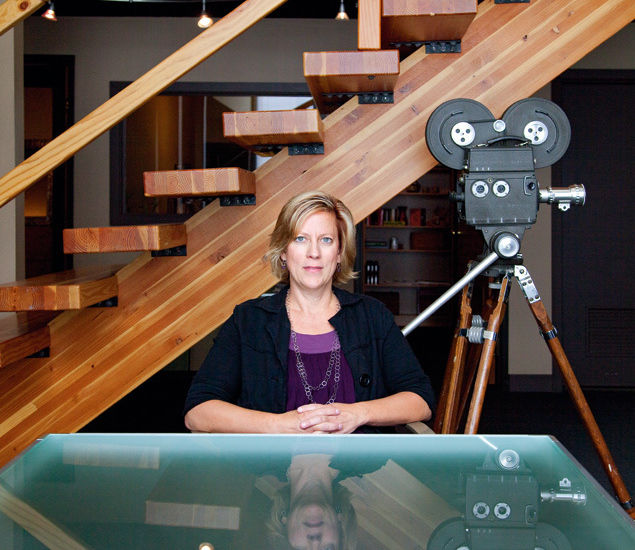
Image: Larry Letters
"I think the entrepreneurs and companies that are interested in the Central Eastside right now are looking for authenticity," says Jonathan Malsin, Beam’s director of operations. "It feels like a place where grown-ups come to work, where the purpose is productivity."
Since declaring the district an urban renewal area in 1986 (allowing money to be borrowed against future increased tax revenues), the city has leveraged a range of new buildings, renovations, and big infrastructure projects. First the $30 million Eastbank Esplanade, which opened in 2001, reestablished a long-severed link to the Willamette. The $17.8 million East Burnside-Couch Couplet is already stoking small-scale retail interest in the district’s northern zone. In 2012, the streetcar’s $148 million eastern extension is poised to open the district to thousands of downtown and Lloyd District workers. In the semi-distant future, the proposed Portland-Milwaukie MAX line, slated to cross the river near OMSI, could transform the district’s sprawling southern end. Add in the hundreds of small, enterprising old-line businesses, artists in search of cheap rent, entrepreneurs, and even the skateboarders who guerrilla-built and now run Burnside Skatepark, America’s finest anarchist sports venue, and you have the type of place almost unheard of in 21st-century America: a central-city neighborhood that simultaneously feels like a stronghold of a bygone, pre-disposable era and a potential harbinger of Portland’s industrious, self-made future.

Image: Larry Letters
The best way to learn what the Central Eastside is all about, though, is to walk its rough-hewn blocks, dodge its semis and occasionally trip over the freight rails running through its streets. The attractions might include stacks of boxes filled with russet potatoes, sitting lonely on a loading dock; some endearingly scruffy arts kids smoking outside the Oak Street Building, a warren of cheap studios; the dense, herbal aroma arising from Tazo Tea’s manufacturing plant; or fliers for bands you’ve never heard pasted around the club Rotture.
The whole scene works like a Venn diagram of distinct but overlapping cultures, eras, and ways of life. In one afternoon, I visited two businesses that offered both a disorienting study in contrast and a cohesive glimpse of what makes the Central Eastside so compellingly vibrant.
School Specialty Co, on SE Third Avenue, makes pom-poms in no fewer than 26 colors of extruded plastic, sold wholesale to schools and other pep-oriented entities. It’s a family firm: David Lorati keeps a portrait of his late father, Bud, who founded School Specialty in 1957 with Lorati’s mother, handcrafting his own machinery and assembly line, some of it run with wooden parts. When I visit, David’s mom is on the shop floor, alongside employees with decades-long tenures.
"I used to hold engineering parties here after hours," Lorati says. "I’d invite the smartest people I could find, and we’d have a barbecue and brainstorm how to solve mechanical problems. This district is home to a knowledge base that I don’t think people are fully aware of. There are things going on inside some of these rough, old, unrenovated buildings that are amazing. We have a concentration of learning and practical capacity, so close to the center of town, that is certainly unique in Portland, and would be hard to replicate elsewhere."
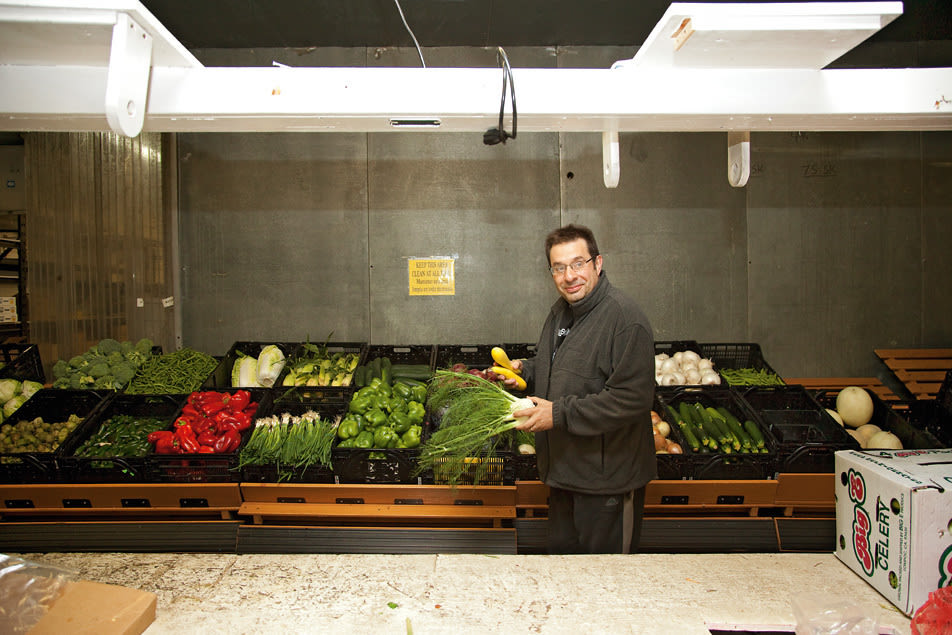
Image: Larry Letters
I leave Lorati’s place and walk across the neighborhood to the Olympic Mills Commerce Center. Inside the airy renovated building, down the hall from the Olympic Provisions restaurant, I find Parliament, a small (but growing) advertising firm whose clients range from Microsoft to local wedding photographers. The company occupies a sprawling suite decorated in a style that could be described as Mad Men meets Paul Bunyan: artfully jigsawed reclaimed barn timber walls; sleek midcentury furniture; and recycled road signs. The moment I walk in, the staff of designers and copywriters is taking a break from work to enjoy some vegan cake.
"The founder of this company started out all by himself," Parliament’s business manager, Paul Snowden, tells me, echoing Lorati’s incubation tale. "When we moved in here, it was just a few people in one little part of the current space. We grew. We knocked down a wall. We were working in here while the carpenter was still doing the build-out—we’d get sawdust all over our keyboards."
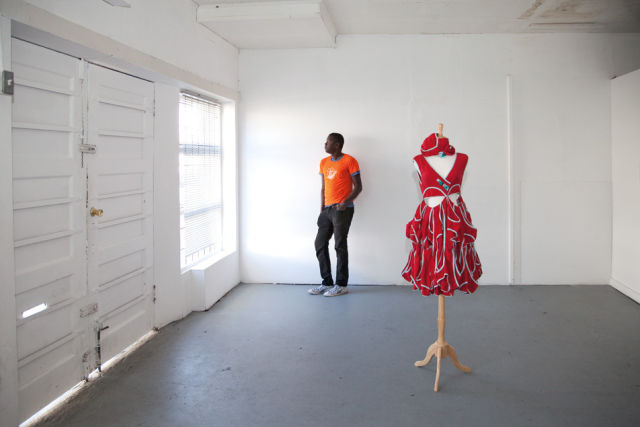
Image: Larry Letters
This creative interplay between old and new, concrete and abstract, is exactly the quality that has defied most efforts to come up with a formula for the Central Eastside’s future. Major local developers are undoubtedly eyeing the area with interest, but outsiders tend not to grasp the neighborhood’s DIY dynamic, as evidenced by local mega-developer Gerding Edlen’s poorly received, and ultimately doomed, proposal to plant a Home Depot in the area. Some (urban planners, various city administrators) have seen the district as a potential annex to corporate downtown. The area’s longtime property owners have militantly defended the Central Eastside’s official status as an “industrial sanctuary” and demanded improved freight access and other such nitty-gritty amenities. Would-be “visions” have ranged from a late-’80s scheme to move I-5 (and pave the way for a Pearl-style condo explosion) to perforating the area with a major new freeway on-ramp, the better to move loaded semitrucks out. And even the successfully complete schemes like the esplanade and the East Burnside-Couch Couplet project earn eye-rolls from old-timers who see such amenities as City Hall raids on the district’s urban renewal dollars.
In reality, neither side called it quite right, and the neighborhood became something no master plan could have created: a kind of permanent ’60s SoHo, with enough new businesses, artists, bars, and restaurants to be socially vibrant but plenty of operational forklifts to stave off banal yuppification.
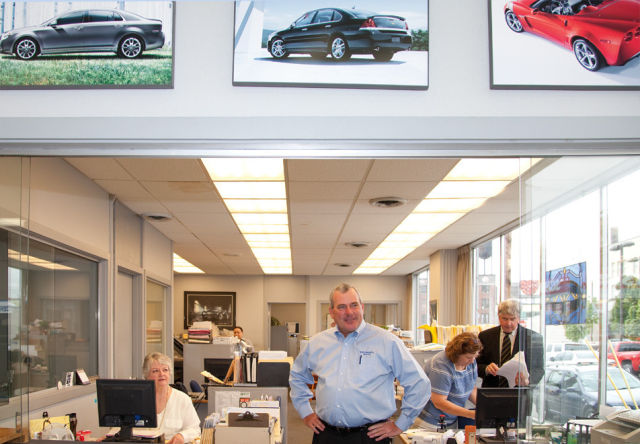
Image: Larry Letters
On a hot afternoon, I meet Peter Finley Fry at Rontoms, a cavernous, hipster-approved bar in the shadow of the industrial-chic Bside6 tower. Fry, a career urban planner whose disarmingly scattered manner belies his capacity for pulling strings, has been involved in the Central Eastside for decades, mostly helping the district’s business owners navigate the political labyrinth of Portland’s planning and development processes. Fry whips out a 1998 bird’s-eye map based on designs he says he made in the ’80s, which color-codes the area into five distinct zones by transportation and building type. The chart still describes the district well today, even though many of the zones are now filled with specific businesses that no one imagined back in the ’80s.
In Fry’s view, fealty to on-the-ground reality has gently steered the district to its present state, where old and new coexist. Unlike the add-water-and-stir urban renewal of South Waterfront, the Central Eastside is "a neighborhood growing on its own terms," Fry argues.
"I’ve basically been advocating that the district, in any document, cross out the word ‘manufacturing’ and put in the word ‘production,’" he says. "Production can mean you’re opening a new brewery, or it may mean you’re making software. Whatever it is, that’s what the Central Eastside is about. Planners talk about mixed-use—well, this is the real mixed-use, and it’s bringing a whole area back to life. The Olympic Mills building probably used to have 10 warehouse guys in it during working hours. Now there are 300 people showing up to work there every day."
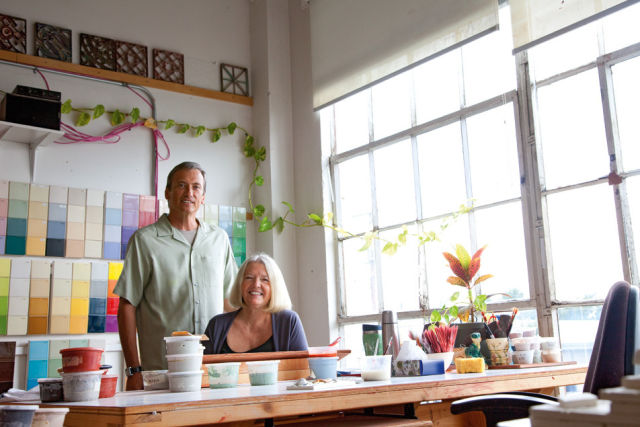
Image: Larry Letters
So what’s next? The current pace of change could certainly experience a rapid acceleration. If that happens, will this rough-hewn neighborhood keeps its independence and hands-on grit?
"We work hard to say what we are and that we need to stay this way," says Juliana Lukasik, vice president of the Central Eastside Industrial Council, the neighborhood’s feisty business association. "Don’t mess with it. Our industrial businesses tend to be somewhat nervous about change, and they have every right to be, because the conditions that allow them to exist here are somewhat delicate and could easily change. And what we’ve seen in the history of development interest in the neighborhood is that many development entities are more interested in their own agendas than in the health of the district."
Interestingly, Lukasik herself owns not a machine shop, warehouse, or factory, but a commercial production studio on the district’s northeastern fringe. Her company, @Large Films, makes commercials for Nintendo and Nike, among others. Thus, she is simultaneously an elected voice of the Central Eastside’s old-line industries and a symbol of its multifarious, creative new direction. The neighborhood’s organic hybrid of these wildly different business cultures results not from old-style urban-renewal engineering, but rather a sort of biological development model, in which diversity breeds resilience.
"We’re just kind of growing on our own," Lukasik says of the neighborhood. "A lot of cool stuff is happening, and I love that it’s becoming a 24/7 environment where you can find a great bar next door to a factory or, you know, an advertising studio. What is happening here is unique in the country. So let’s not ruin it."




